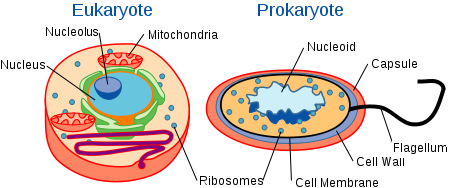The first few chapters are about the earth and oceans and the basics, just to make sure by the time you get to chapter 4+, it will be a little easier. Then the fun starts with the dissections. Here is just a bit of what we have covered so far.
*A few factoids:
~Scientists have named and classified over 1.5 million marine species, and there are an undetermined number of marine species yet to be discovered and named.
~Between 50% and 80% of life on earth is found in the ocean.
~Around 90% of volcanic activity occurs in the oceans.
~One mouthful of seawater can contain millions of bacterial cells, hundreds of thousands of phytoplankton, and tens of thousands of zooplankton.
~The oceans cover 72% of the earth's surface.
~The speed of sound in water is estimated to be 1,435 m/sec. This is approximately 5 times faster than the speed of sound in air.
 |
| from Ducksters.com |
~Without cells, there would be no life because all living things are composed of cells no matter if they are single-celled organisms or multi-celled organisms.
~There are two primary types of cells. They are prokaryotic and eukaryotic. Prokaryotic cells do not have a nucleus to house DNA but the eukaryotic cells do have nucleus that houses DNA.
~Archaens (microscopic organisms:single-celled) and bacteria are prokaryotic and animal and plant cells are eukaryotic.
~Did you know there could be as many as 100 trillion cells in the body? Bacterial cells outnumber the human cells in the body.
~Parkaryotic cells are the most primitive form of life on earth, and they can thrive anywhere.
~Cells contain organelles which carry out functions for the cell.
~Groups of cells of the same type are called tissues.
More reading:
Science Daily
Science for kids
Biology for kids
Khan Academy
Okay, now I will go on about something awesome that was discovered while researching cells since that is what I like to do but this actually fits in with A12's study of DNA and life, either way, it is really interesting. We found an article from the Smithsonian written in 2010 called Cracking the Code of the Human Genome. This is the story of an African-American tobacco farmer named Henrietta Lacks. In 1951, she was diagnosed with terminal cervical cancer. She was treated at Johns Hopkins University by Dr. George Gey.
It turns out that Dr. Gey removed a few cells from her cervix without getting consent from Ms. Lacks, and he went on to make great discoveries from obtaining these cells. Dr. Gey discovered that not only could Mrs. Lacks' cells be kept alive but the cells could also grow indefinitely. Mrs. Lacks' cells have been cultured for the past 60 years and used in a variety of experiments such as a vaccination for Polio, in vitro fertilization, cloning, and genetic mapping. These cells are called HeLa cells named after Mrs. Lacks. They are cells from what is known as the immortalised cell line. Mrs. Lacks' family, however, never knew anything about this until 25 years after she had passed away. There is a book called The Immortal Life of Henrietta Lacks if you want to learn more.



Bravo and cool story! Dawn
ReplyDeleteWow! Sounds fun!
ReplyDelete